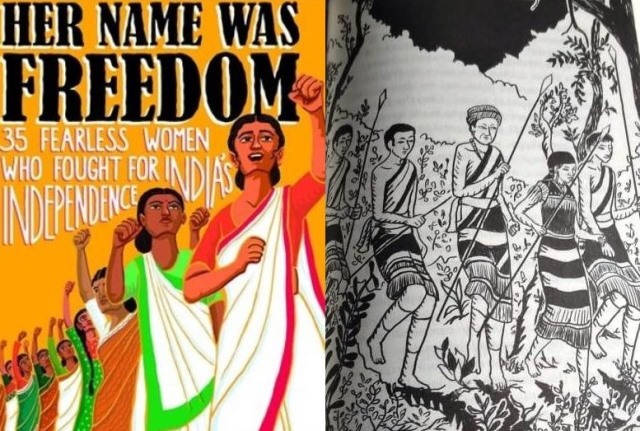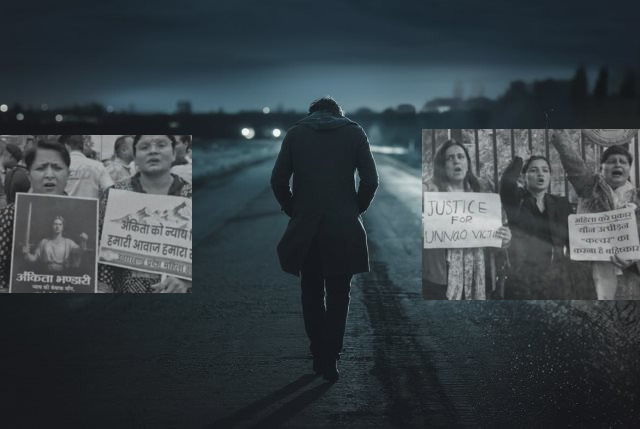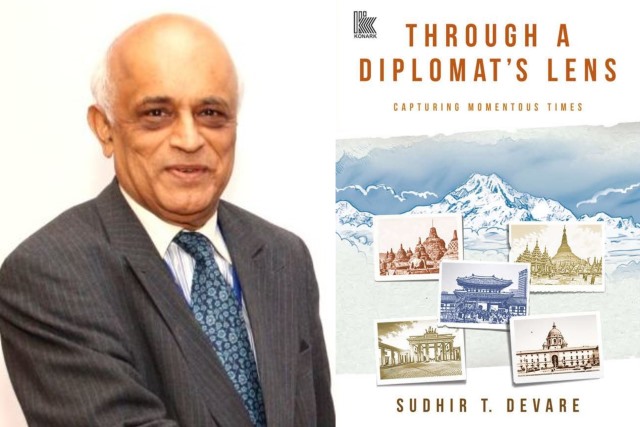
Forgotten Fearless Women of Freedom
‘Amrit Kaal ka Amrit Mahotsav’. Remembrance of things past. And remembrance of things future.
So let us remember, for a change, in the 75th year of Independence, the fearless women who fought for India’s Independence.
Let us remember many others too, who have sacrificed, and continue to sacrifice, for a secular and egalitarian India, and its constitutional democracy. So that memory arrives as resurrection and optimism, and the festering wounds turn into a dream, like that immortal Sahir song: Woh Subah kabhi to ayegi...
This is because, it was the dream of this utopian Subah, which charged up so many women across the vast, invisible and undulating Indian landscape, against the British; little girls, young women, sisters, mothers, grandmothers. Some were shot, some spent years in dark and dingy prisons, some died unsung, discarded and forsaken by a ‘free India’, some lived to tell the tale.
Hence, let us listen to their tales: told, untold.
The book is: Her Name was Freedom: 35 Fearless Women Who Fought for India’s Independence. It is written by America-based writer Anu Kumar. The cover and other sensitive illustrations in the book are by Mistunee Chowdhury and the cover design by Sharanya Kunnath (Hachette India, Children’s Books, pg 222, 2022). The book is for children, but high time adults read it as well.
Especially those who did not fight in the freedom movement or have any creative memory or inheritance of it; or those who have ‘no or little’ historical understanding of how India fought a protracted and peaceful struggle for several years, including armed, underground revolutionary actions; or, those who were glorifying Adolf Hitler and the Holocaust while millions of Jews were being gas-chambered in the heart of Europe, and while thousands of freedom fighters and revolutionaries were being tortured, or rotting in jail and in Kala Pani, or were being hanged in India.
The youngest of them, Khudiram Bose, 18, hanged; his young revolutionary friend, Prafulla Chaki, shot himself – he did not want to be captured alive. And how old was Bhagat Singh when he was hanged, along with Sukhdev and Rajguru, while reading Lenin in his last moments: just about 23.
However, here we are remembering 35 fearless women. We know the stories of many of them since our childhood, when history was not being re-written. Others we came to know and admired as we grew up: Rani Lakshmibai, Savitribai Phule, Debi Chudhurani, Annie Besant, Bhikaji Cama, Kamaladevi Chattopadhyay, Durgabai Deshmukh, Rajkumari Amrit Kaur, Vijaya Lakshmi Pandit, Aruna Asaf Ali, Lakshmi Sehgal, Sarojini Naidu.
But few of us know about Rani Chennamma, Muthulakshmi Reddi, Hansa Mehta, Pritlata Waddedar and Kalpana Datta, Yashodhara Dasappa, Begum Qudsia Rasul, Rani Gaidinliu, Dashayani Velayudhan, Dhanvanthi Rama Rau, Annie Mascarene and Matangini Hazra. This beautiful book tells us their brave stories also, as much as that of the famous women, with its text and images sparkling with infinite energy, courage, sacrifice and idealism.
In this column, thereby, I can only speak of some of these unknown and great freedom fighters. They shine like morning stars.
Writes Anu Kumar: “A young teen hero from Nagaland, Rani Gaidinliu fiercely led the Zeliangrong Naga community in its fight for freedom against British rule. As an advocate of traditional Naga practices, she continued to protect the culture and customs of people till the very end.”

Born on January 26, 1915, she fought a fierce battle in the village of Hangrum. “In 1932, this village became the site of a fierce battle between guerilla forces, led by 16-year-old Gaidinliu, and British soldiers…To evade the British authorities and their spies, Gaidinliu went underground to direct and organize the rebellion… At this time the movement spread far beyond the borders of Manipur and caused tremendous anxiety to the British… A reward of a princely Rs 200 announced for Gaidinliu’s arrest, was soon raised to Rs 500…”
ALSO READ: ‘Know What Tiranga Means Before Hoisting It On Your Roof’
This protracted struggle in the hills of Cachar, Manipur and Nagaland continued, with the soldiers armed with guns, and the guerillas with spears and arrows, walking miles in the dense forests to hide and attack again.
When she was finally arrested, she was taken to Kohima on foot and then to Imphal. In March, 1933, she was sentenced to life imprisonment. In1937, Jawaharlal Nehru met her in Shillong jail, but his campaign for her release did not move the British. Nehru gave her the title ‘Rani’. She was finally released in 1947, after India attained Independence, after spending a hard 14 years in jail.
The story of Pritilata Waddedar and Kalpana Dutta, both revolutionaries in Chittagong, in what was East Bengal, since they were teenagers, as young students in Calcutta, and as underground revolutionaries led by Master Surya Sen, the leader of the Chittagong Rebellion and the famous Armoury Raid, is extraordinary in terms of unimaginable bravery. It is also replete with tragedy, suffering and sacrifice.
They lived in hiding for years, moving in difficult terrains and from one location to another while being chased by the police, mobilizing people, attacking the British, distributing subversive literature, collecting arms and explosives, strategizing how to free their comrades from the prison. They gave their childhood and youth to the struggle for freedom from the brutal British empire. How many of us remember them today and their comrades, so many of them tortured, imprisoned and killed?
The revolutionaries made a plan to attack the Pahartali Railway Officers Club in Chitttagong, where the white gentry and officers would party. A signboard hung outside the club said no entry to ‘dogs and Indians’.
“On the night of September 24, 1932, a group of about a dozen young people, trained in the use of arms and led by Pritilata, met at the club. It was nine at night when shots rang out. Bombs were thrown into the compound. Those inside rushed to escape from the windows but retreated in panic as they realized they were under attack. The operation lasted barely a quarter of an hour… The police stationed at the club fired back. Pritilata, positioned at the very front of the attack, was struck on the chest by a bullet. The wound was sharp and serious, and Pritilata, not wishing to hold up her companions, consumed poison and died a few moments later. She was only 21…”
Three months later, in May 1933, Kalpana Datta, on the run, was arrested and sentenced to life imprisonment. “She was merely 18 at that time, and too young to receive a death sentence. In May 1939, following popular pressure on the government from CF Andrews, Rabindranath Tagore and Gandhi himself, who came to meet her in prison, Kalpana was released… In March 2012, 80 years after her tragic death, the University of Kolkata posthumously awarded Pritilata her long-pending degree…”
Then there was Yashodhara Dasappa, who started a peaceful revolution in the small village of Vidurashwatha in Karnataka. On April 25, 1938, several villagers defied the British and started a movement which spread like fire across the region. “Their mission: to hoist the flag of their choice. This was not the flag of the princely state of Mysore, but that of the Indian National Congress…”
Or Begum Hazrat Mahal: “This brave queen of Avadh came from humble beginnings but had an extraordinary life. She refused to surrender to the British in 1956 in what is known as India’s first war of Independence…”
Not everyone could be recorded in this book. There are many other brave icons still waiting to be documented in the Indian history of freedom. Among others is Shanti Ghosh and Suniti Choudhury from Comilla in East Bengal; both 16, school girls, and involved in the underground revolutionary movement. They shot dead the notorious Britisher called Charles Stevens, on December 14, 1931, the cruel district magistrate of Comilla, in his office, as revenge for the hanging of Bhagat Singh in a Lahore jail in March. These girls were sentenced to life.
After the verdict, a flyer was reportedly found by the police in Rajshahi in East Bengal. It had pictures of Shanti and Suniti along with two lines from the poem of Robert Burns:
Tyrants fall in every foe…
Liberty’s in every blow!



